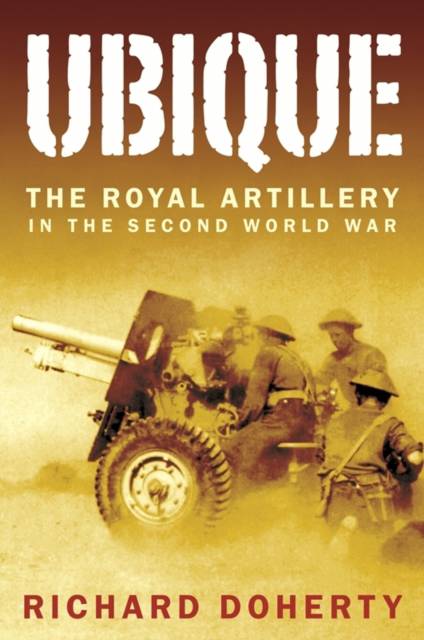
En raison d'une grêve chez bpost, votre commande pourrait être retardée. Vous avez besoin d’un livre rapidement ? Nos magasins vous accueillent à bras ouverts !
- Retrait gratuit dans votre magasin Club
- 7.000.000 titres dans notre catalogue
- Payer en toute sécurité
- Toujours un magasin près de chez vous
En raison de la grêve chez bpost, votre commande pourrait être retardée. Vous avez besoin d’un livre rapidement ? Nos magasins vous accueillent à bras ouverts !
- Retrait gratuit dans votre magasin Club
- 7.000.0000 titres dans notre catalogue
- Payer en toute sécurité
- Toujours un magasin près de chez vous
31,45 €
+ 62 points
Description
In Richard Doherty's latest book he looks at the wide-ranging role of the Royal Artillery (RA) during the Second World War, examining its state of preparedness in 1939, the many developments that were introduced during the War, including aerial observation and self-propelled artillery, the growth of the regiment and its effectiveness in its many roles. It is illustrated with stories of the actions of individuals from members of gun detachments to general officers. During the Second World War the Germans assessed the Royal Artillery as the most professional arm of the British Army. British gunners were accurate, effective and efficient and provided fire support for their armoured and infantry colleagues that was better than that in any other army. It is often claimed that British artillery came into its own after the Battle of El Alamein in late 1942. In the opening bombardment of Operation Lightfoot, the massed artillery of the Eighth Army hammered Axis positions and severely damaged the enemy artillery's ability to react. But this was not the first occasion on which the Eighth Army had massed its artillery: it had done so with 200 guns along the Alamein Line in July, and the effectiveness had long been recognised. In fact, the power of a concentrated shoot had been shown by one gunner regiment during the May 1940 Dunkirk campaign. However, the RA provided much more than field and medium artillery battlefield support. Gunner regiments manned anti-tank guns on the frontline and light anti-aircraft guns in divisional regiments to defend against air attack at home and abroad. The RA also helped to protect convoys that brought essential supplies to Britain, and AA gunners had their finest hour when they destroyed the majority of the V-1 flying bombs launched against Britain from June 1944.
Spécifications
Parties prenantes
- Auteur(s) :
- Editeur:
Contenu
- Nombre de pages :
- 256
- Langue:
- Anglais
Caractéristiques
- EAN:
- 9781862274921
- Date de parution :
- 01-11-08
- Format:
- Livre relié
- Format numérique:
- Ongenaaid / garenloos gebonden
- Dimensions :
- 170 mm x 240 mm
- Poids :
- 644 g

Les avis
Nous publions uniquement les avis qui respectent les conditions requises. Consultez nos conditions pour les avis.






